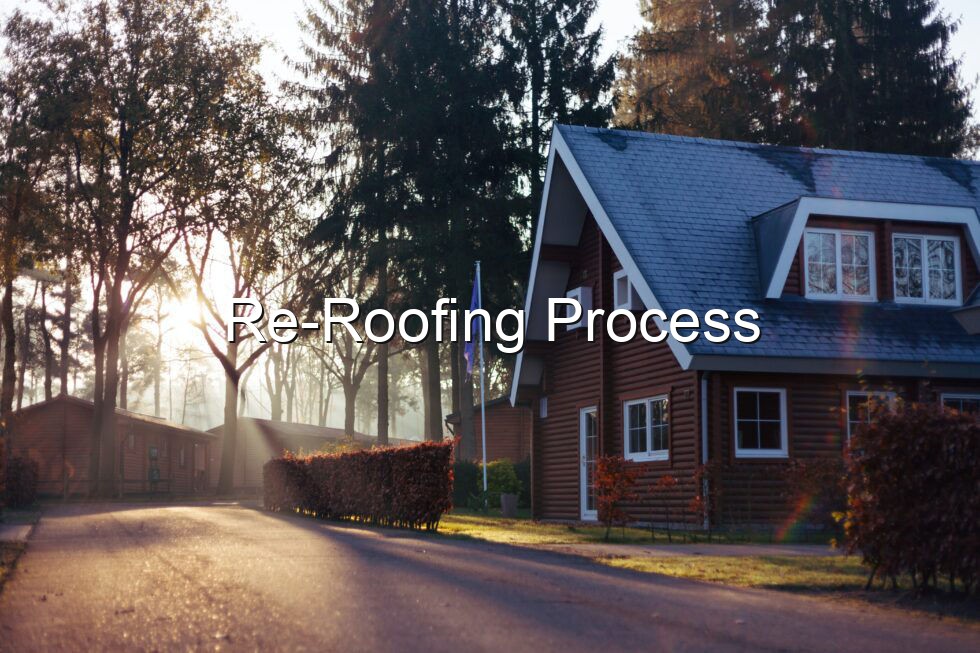Contact us today to ask about our FREE remote Google imaging and/or on-site roofing quotes.
Call us today!
(778) 809-7663
Contact us today to ask about our FREE remote Google imaging and/or on-site roofing quotes.
Call us today!
(778) 809-7663

Before the re-roofing process starts, all of the paperwork needs to be completed to protect both parties. This includes signing a contract, receiving the construction lien notices, finalizing the shingle selection for the homeowner’s home and setting up an estimated project start date.
Prior to the project starting, depending on the complexity of the roof, your roofing contractor should have a discussion with the homeowner to prepare them and may opt to have the materials and “staged” on top of your roof a few days before the project starts. Ask for this date, if you’re unaware or if it is an inconvenience for whatever reason.
Table of Contents
Before any tear off starts, we protect your home and make our work area safe for the team; by protecting landscaping and plants, installing safety boards if the roof is steep, installing guard rails and scaffolding, moving yard furniture, protecting siding from scratches and damage, etc.
Transport tools, mobile dump bin, have a crane lift new materials onto the roof strategically (to avoid them from falling off or damaging the roof trusses).
Remove a section of old roofing materials and debris, dispose of it in the dump bin. Depending on the weather, we use tarpaulins to protect the exposed roof from absorbing excessive water.
Check the plywood deck is in good shape; replacing any plywood that has mold, is soft due to water damage, nailing in any loose plywood, etc. Ensuring that the roof deck is acceptable for nailing new shingles, while avoiding existing damage to the roof from worsening and unsightly bumps in the roof appearing weeks later (usually 1-2 weeks after work is done).
Once the roof deck is in good shape, roof underlayment is installed with added water and ice shielding to roof valleys and penetrations to avoid excess moisture to run-off. Cover the roof with roofing felt, which acts as a barrier between the shingles and the roof deck so that the shingles don’t stick. Clean up any debris and material waste, dispose of in the dump bin.
Once the underlayment is ready, the starter shingles, regular shingles and at the end, ridge and hip cap shingles are installed. During this step, to prevent future water issues and air circulation issues, roof flashings and venting components are installed. This involves properly fitting and sealing any plumbing, air vents, valleys, adjacent walls, skylights, etc. Cleaning up any debris and materials and disposing of in the dump bin.
Allowing for the roof to remain fully protected from wetter weather from damaging the roof at any time.
Dispose of any remaining roofing materials and use a magnetic roller to capture any remaining nails, staples or metal debris are completely removed. Leaving your home and roof cleaner than when we arrived.
In the case of a cedar roof conversions, there is no roof deck, so the skip-sheathing will require repairs and a new roof deck will need to be installed.
Re-roofing is the process of replacing the existing roof of a building with a new one. It involves removing the old roofing material, inspecting the roof deck for any damage or issues, and then installing new roofing material to provide better protection and extend the lifespan of the structure.
You should consider re-roofing if your current roof is showing signs of deterioration, such as curling or missing shingles, leaks, or water stains on ceilings. It's also a good idea if your roof is reaching the end of its expected lifespan, which is typically around 20-25 years.
During re-roofing, the process includes removing old roofing, inspecting the roof deck for damage, making repairs, adding moisture protection underlayment, installing new materials (shingles, tiles, or metal sheets), ensuring ventilation and flashing, and concluding with cleanup and old material disposal.
Roofing options for re-roofing include asphalt shingles (affordable), metal (durable, energy-efficient), tile (distinctive, fire-resistant), slate (classic, elegant), and wood (natural, high maintenance).
The duration of the re-roofing process depends on several factors, including the size of your roof, the type of roofing material being installed, weather conditions, and the complexity of the project. Generally, re-roofing can take anywhere from a few days to a week or more.